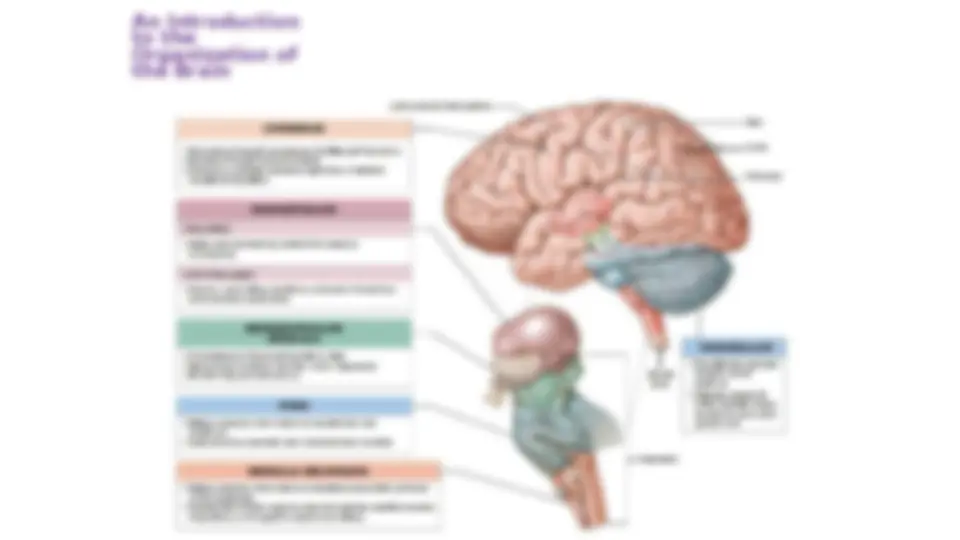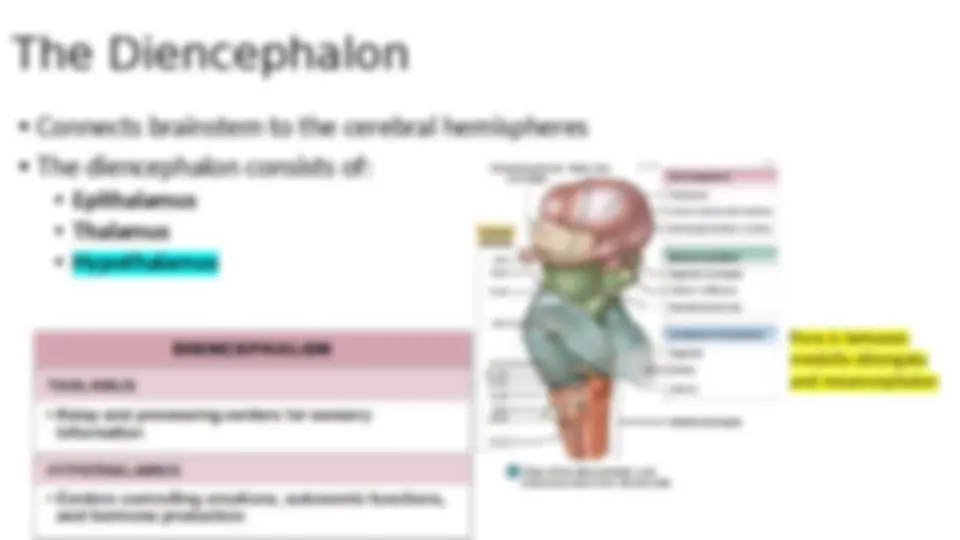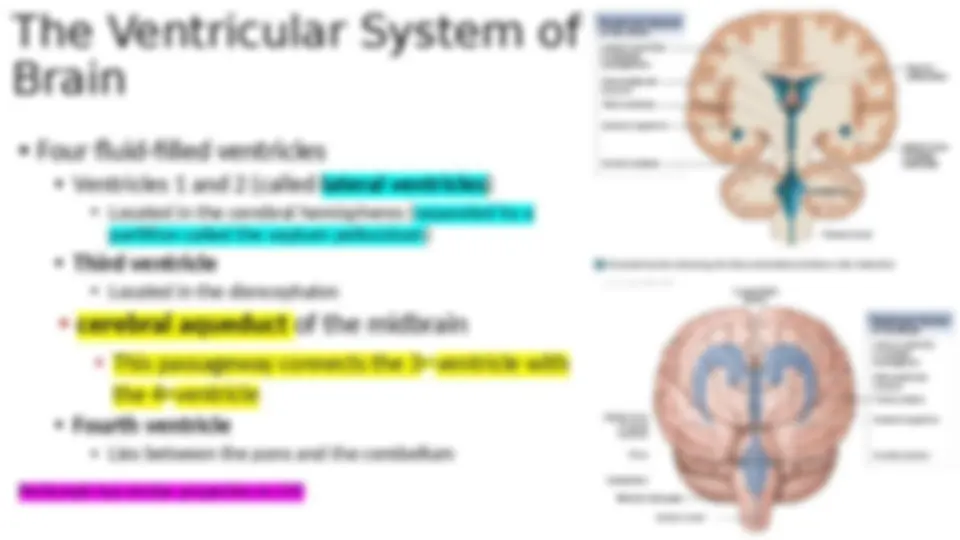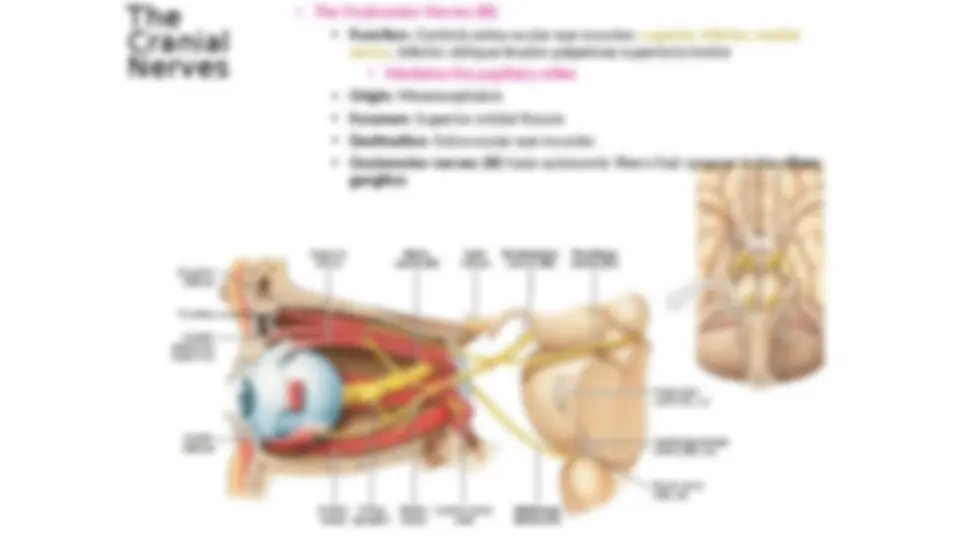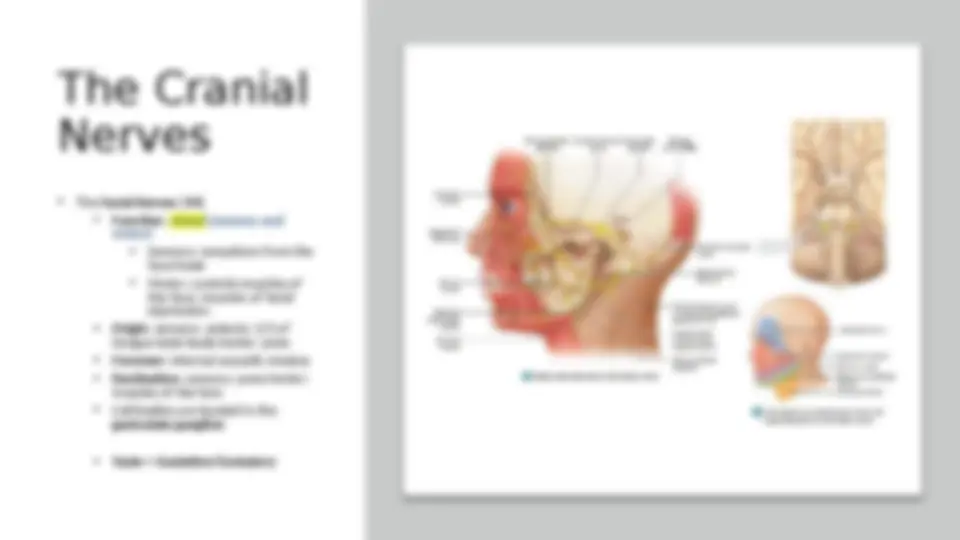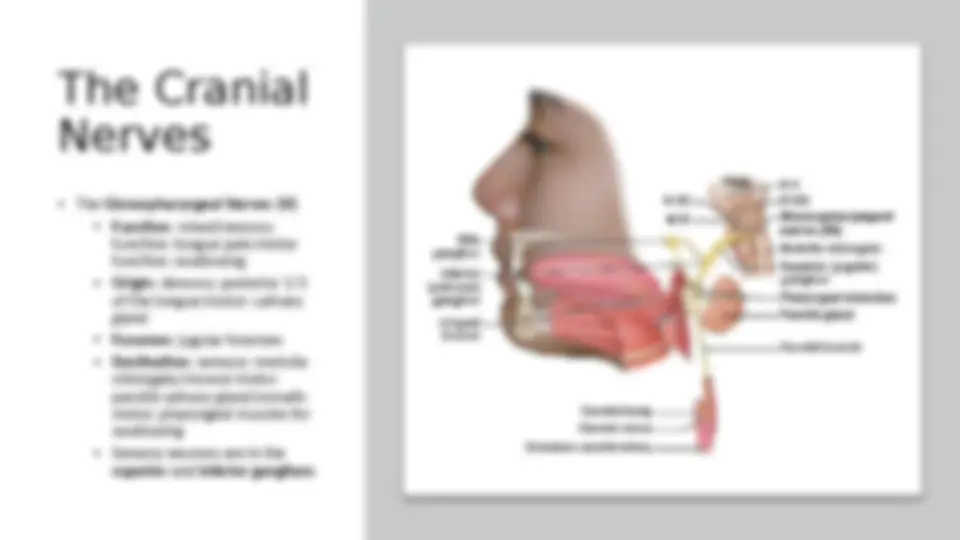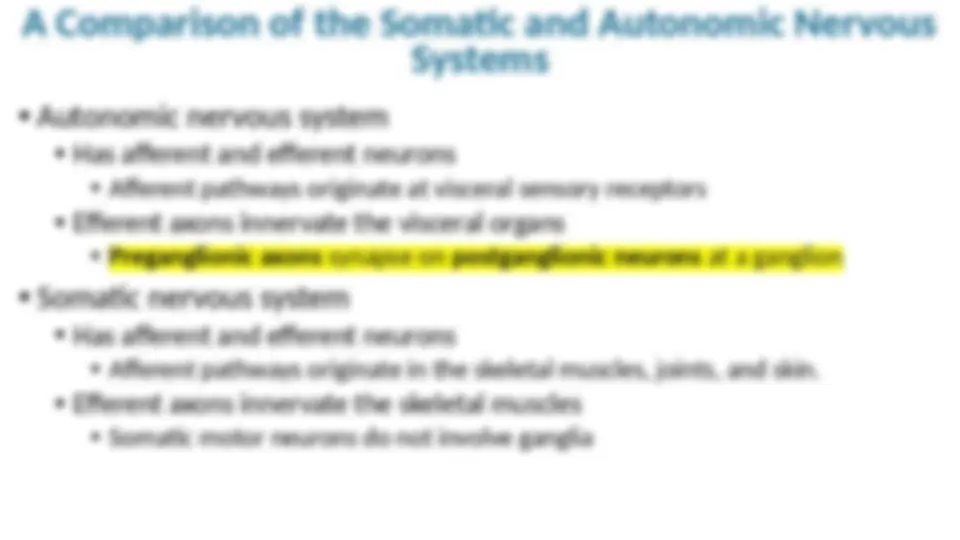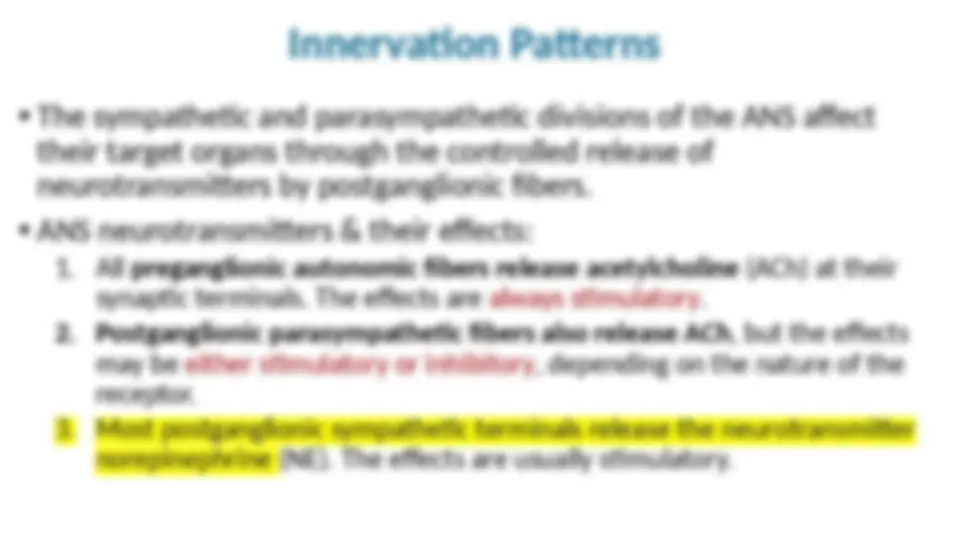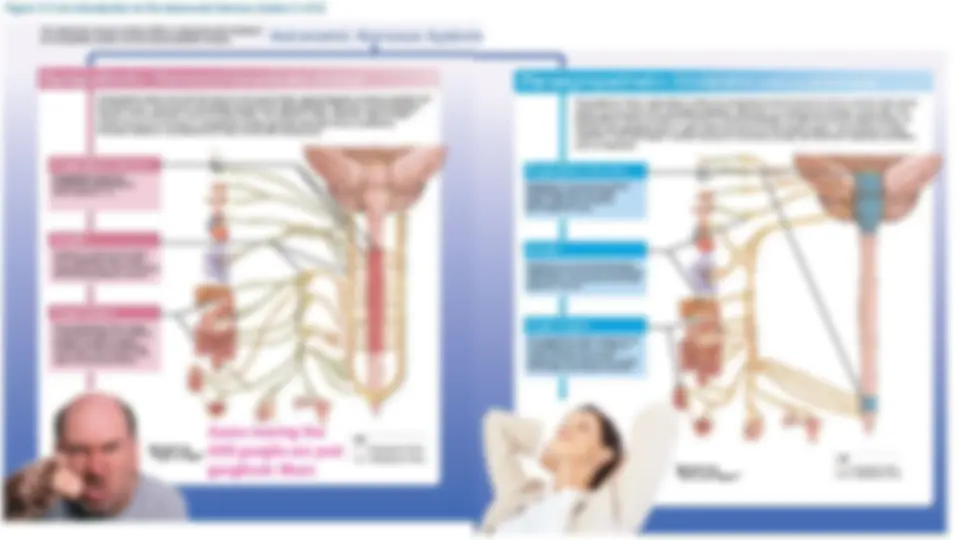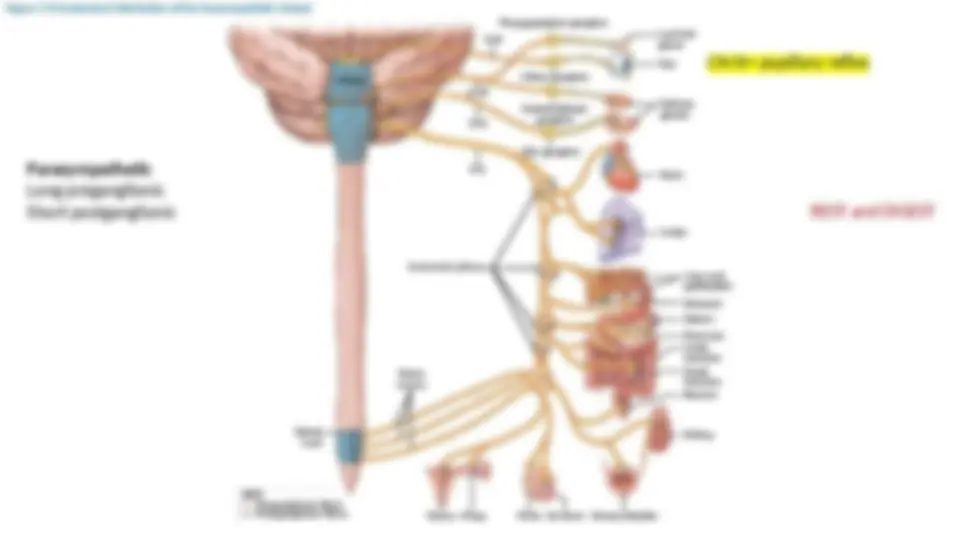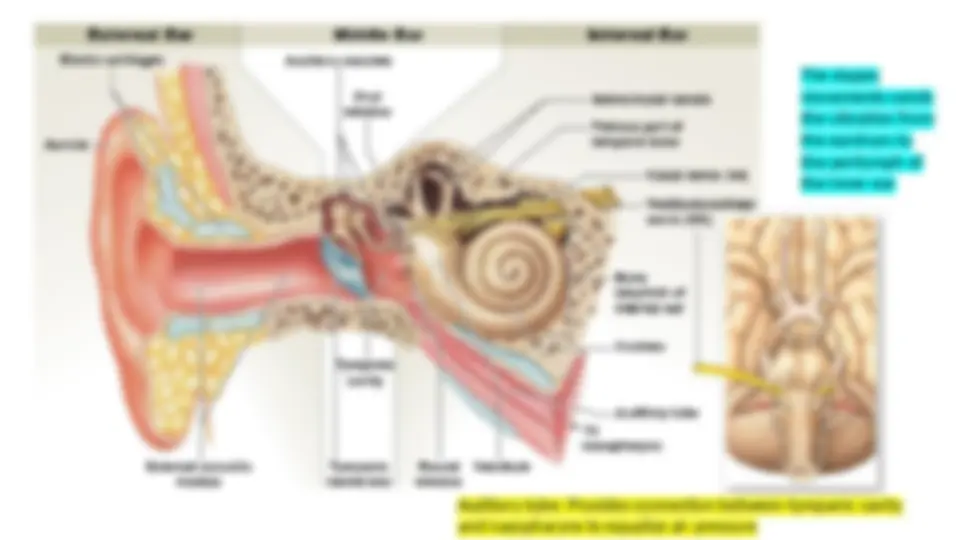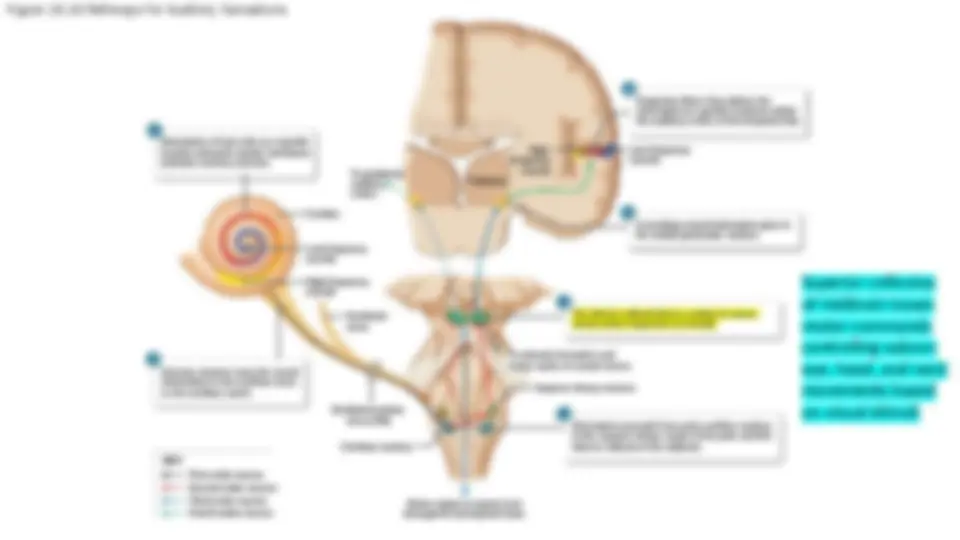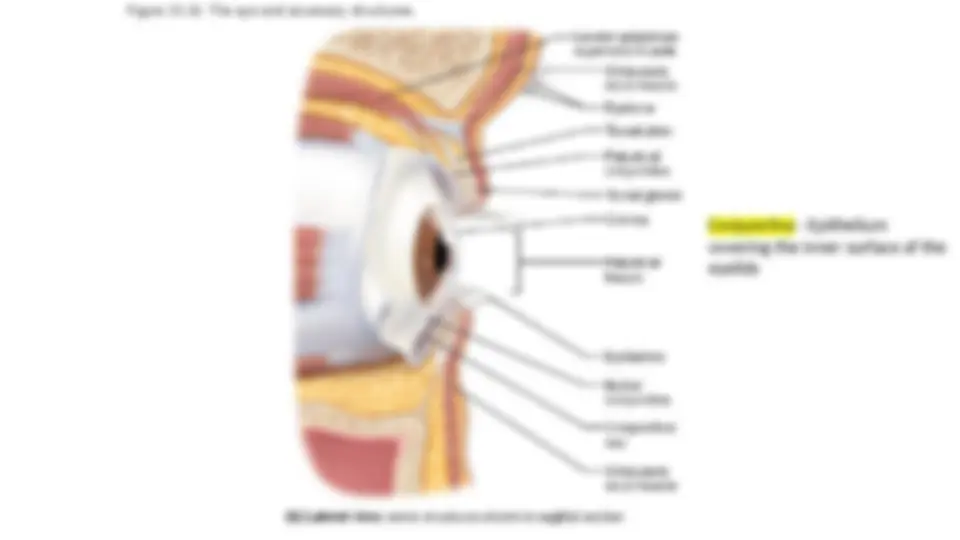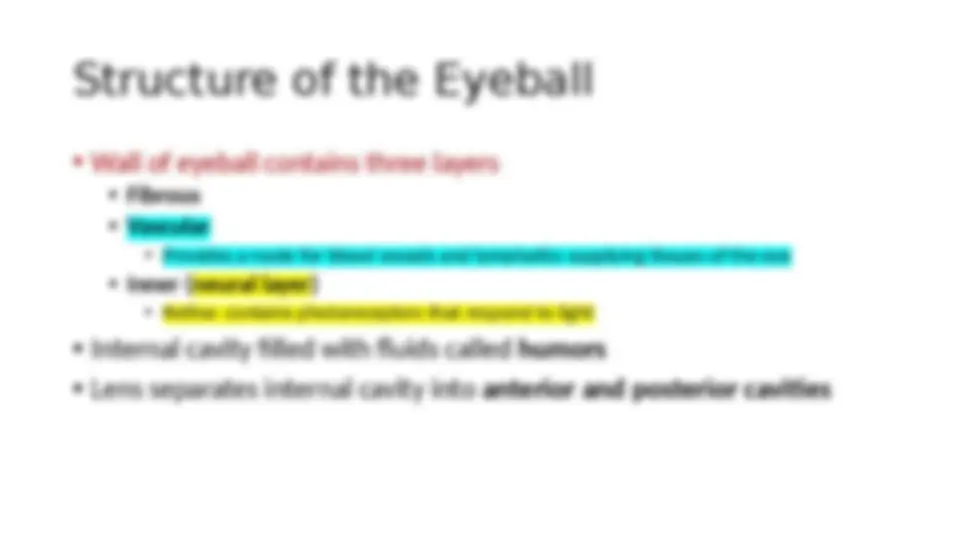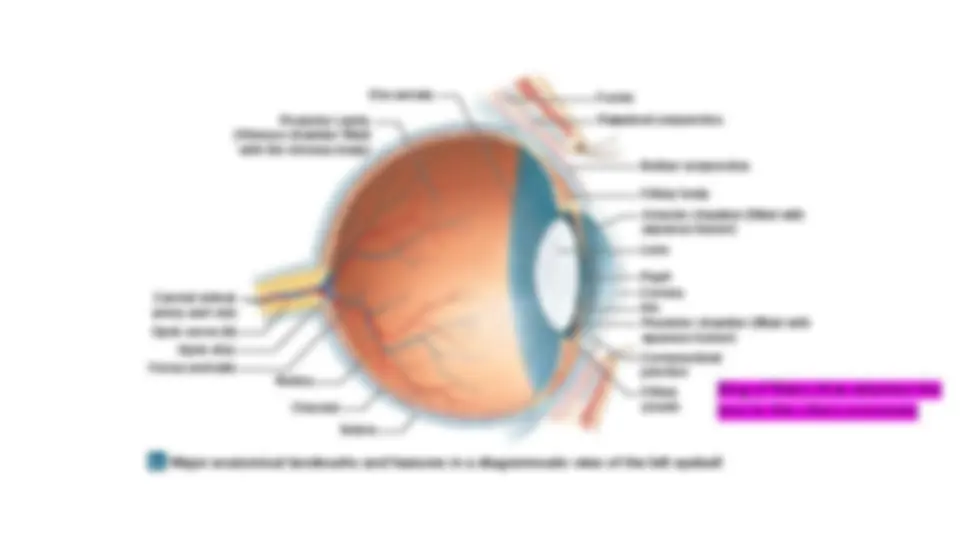Download ANAT260 Human Anatomy Lecture Quiz 4 Review Liberty University and more Quizzes Biology in PDF only on Docsity!
ANAT 260: Human Anatomy
Lecture Quiz 4
Review
An Introduction to
the Organization of
the Brain
Ventral part of the
metencephalon became Pons;
while dorsal part became
cerebellum
The Diencephalon
- (^) Connects brainstem to the cerebral hemispheres
- (^) The diencephalon consists of:
- (^) Epithalamus
- (^) Thalamus
- (^) Hypothalamus
Pons is between
medulla oblongata
and mesencephalon
The Ventricular System of the
Brain
- (^) Four fluid-filled ventricles
- (^) Ventricles 1 and 2 (called lateral ventricles )
- (^) Located in the cerebral hemispheres (separated by a partition called the septum pellucidum)
- (^) Third ventricle
- (^) Located in the diencephalon
- (^) cerebral aqueduct of the midbrain
- (^) This passageway connects the 3 rd^ ventricle with the 4 th^ ventricle
- (^) Fourth ventricle
- Lies between the pons and the cerebellum
Perilymph has similar properties to CSF
An Introduction to the Organization of the
Brain
- (^) Cerebrum (telencephalon): conscious thought processes/intellectual functions. memory storage/conscious regulation of skeletal muscle contractions - (^) Consists of paired cerebral hemispheres separated by the longitudinal fissure - (^) Contains sulci (grooves) - (^) Contains of gyri (ridges) Communication between hemispheres occurs via corpus callosum
The Cranial Nerves
- The Oculomotor Nerves (III)
- (^) Function : Controls extra-ocular eye muscles: superior, inferior, medial
rectus, inferior oblique/levator palpebrae superioris/motor
- (^) Mediates the pupillary reflex
- Origin : Mesencephalon
- (^) Foramen : Superior orbital fissure
- (^) Destination : Extra-ocular eye muscles
- (^) Oculomotor nerves ( III ) have autonomic fibers that synapse in the ciliary
ganglion
The Cranial
Nerves
- The Glossopharyngeal Nerves ( IX )
- (^) Function : mixed/sensory
function: tongue pain/motor
function: swallowing
- Origin : densory: posterior 1/
of the tongue/motor: salivary
gland
- (^) Foramen : jugular foramen
- Destination : sensory: medulla
oblongata/visceral motor:
parotid salivary gland/somatic
motor: pharyngeal muscles for
swallowing
- Sensory neurons are in the
superior and inferior ganglions
The Cranial Nerves
- (^) The Vestibulocochlear Nerves ( VIII )
- (^) Function : sensory: balance and hearing
- (^) Consists of the vestibular nerve and the cochlear nerve
- (^) Vestibular nerve: axons travel to the vestibular nuclei of the medulla oblongata
- (^) Cochlear nerve: axons synapse in the cochlear nuclei of the medulla oblongata
A Comparison of the Somatic and Autonomic Nervous Systems
- (^) Autonomic nervous system
- (^) Has afferent and efferent neurons
- (^) Afferent pathways originate at visceral sensory receptors
- (^) Efferent axons innervate the visceral organs
- (^) Preganglionic axons synapse on postganglionic neurons at a ganglion
- (^) Somatic nervous system
- (^) Has afferent and efferent neurons
- (^) Afferent pathways originate in the skeletal muscles, joints, and skin.
- (^) Efferent axons innervate the skeletal muscles
- (^) Somatic motor neurons do not involve ganglia
Innervation Patterns
- (^) The sympathetic and parasympathetic divisions of the ANS affect their target organs through the controlled release of neurotransmitters by postganglionic fibers.
- (^) ANS neurotransmitters & their effects:
- All preganglionic autonomic fibers release acetylcholine (ACh) at their synaptic terminals. The effects are always stimulatory. 2. Postganglionic parasympathetic fibers also release ACh , but the effects may be either stimulatory or inhibitory, depending on the nature of the receptor.
- Most postganglionic sympathetic terminals release the neurotransmitter norepinephrine (NE). The effects are usually stimulatory.
The Sympathetic Division
- (^) Sympathetic division consists of:
- (^) Preganglionic neurons between T
and L
- (^) Neuronal cell bodies in ganglia ( ganglionic neurons ) near the vertebral column - (^) Sympathetic chain ganglia (lie lateral to the vertebral column on each side) – control effectors in the body wall, head and neck, and limbs, and inside the thoracic cavity - (^) Preganglionic neurons are located in the lateral horns of the spinal segments T1-L - (^) Collateral ganglia (lie anterior to the vertebral column) – innervate effectors in the abdominopelvic cavity.
- (^) Specialized neurons in the interior of the adrenal gland
Relationship between the Sympathetic and
Parasympathetic Divisions
- (^) Parasympathetic – longer preganglionic
fiber, both pre- and postganglionic fibers
release Ach
- (^) Sympathetic – longer postganglionic fiber,
preganglionic fiber release Ach,
postganglionic fiber release Epi/NorEpi
- (^) All sympathetic neurons are NOT cholinergic © 2018 Pearson Education, Inc.
Auditory tube: Provides connection between tympanic cavity
and nasopharynx to equalize air pressure
The stapes
movements sends
the vibration from
the eardrum to
the perilymph of
the inner ear
Figure 18.18 Pathways for Auditory Sensations
6 1 Projection fibers then deliver the information to specific locations within the auditory cortex of the temporal lobe. Stimulation of hair cells at a specific location along the basilar membrane activates sensory neurons. To ipsilateral auditory cortex Thalamus High- frequency sounds Low-frequency sounds Cochlea Low-frequency sounds High-frequency sounds Vestibular nerve 5 Ascending sound information goes to the medial geniculate nucleus. 4 The inferior colliculi direct a variety of uncon- scious motor responses to sounds. 2 Sensory neurons carry the sound information in the cochlear nerve to the cochlear nuclei. Vestibulocochlear nerve (VIII) Cochlear nucleus KEY First-order neuron Second-order neuron Third-order neuron Fourth-order neuron To reticular formation and motor nuclei of cranial nerves Superior olivary nucleus 3 Information ascends from each cochlear nucleus to the superior olivary nuclei of the pons and the inferior colliculi of the midbrain. Motor output to spinal cord through the tectospinal tracts
Superior colliculus
of midbrain issues
motor commands
controlling subcon
eye, head, and neck
movements based
on visual stimuli

